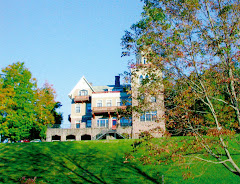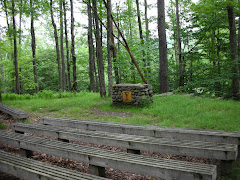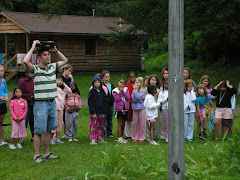 Our beloved long-time maintenance guy - his favorite fix is roofs (not!) and cabin plumbing (double not!) - Stu Alexander has lived with his family in what we used to call "Old John's" house for many years - since, I believe, maybe around '84 or '85. Many reading this will know Stu. What you might not know is that Stu has gone ga-ga about butterflies. He is a huge promoter of Frost Valley's Monarchs and as you see below, in today's update sent to the FV staff, there are some sophisticated projects being set up to support our butterflies. Have a read and contact Stu at camp if you want to help in some way - or if you just want to come up and talk with him about it. I know from first-hand experience that he will be happy to tell you lots about these frail little beauties. Here's Stu:
Our beloved long-time maintenance guy - his favorite fix is roofs (not!) and cabin plumbing (double not!) - Stu Alexander has lived with his family in what we used to call "Old John's" house for many years - since, I believe, maybe around '84 or '85. Many reading this will know Stu. What you might not know is that Stu has gone ga-ga about butterflies. He is a huge promoter of Frost Valley's Monarchs and as you see below, in today's update sent to the FV staff, there are some sophisticated projects being set up to support our butterflies. Have a read and contact Stu at camp if you want to help in some way - or if you just want to come up and talk with him about it. I know from first-hand experience that he will be happy to tell you lots about these frail little beauties. Here's Stu:For the Butterflies, Moths, & the Monarch Migration program on 8/28 there was much cooperation by the Family Campers, staff, & Monarch butterflies. Many thanks to the Houskeepers and Program staff who stopped by to help tag. Volunteers, Wayne & Liz, were terrific helping kids catch Monarchs to tag while I explained the life cycle and what we were trying to do. We had many comments commending FV for preserving meadows and allowing wildlife habitat to return to some previously mowed areas.
As of 8/29 we have tagged 54 Monarchs at FV. I have many caterpillars and chrysalis to hatch and tag in then next few weeks.
Each tag has an identifying number, phone number, and website to report recovered Monarchs. In the 18 years of the Monarchwatch.org program over 12,000 tagged Monarchs have been recovered. All data is available at Monarchwatch.org. about when, where, and how far each recovered Monarch had flown.
The last brood of Monarchs, rather than reproduce, puts all it's energy into flying over 3000 miles to a tiny area in the mountains west of Mexico City. Normally Monarchs only live a few weeks but migrating Monarchs, that make it to wintering sites, will live until mating next spring and start the return North of their offspring. Some of them, after several generations, may reach the Arctic Circle. All tagged Monarchs that are recovered contribute to the database on monarchwatch.org.
The hatch of Monarchs 8/28 - 8/29 was prodigious. The evening of 8/28 Wayne & Liz observed Monarchs roosting in the trees above Lakeview. Several hundred Monarchs flew in one at a time to land and hang side by side for the night. In Mexico, those who make it, will join tens of millions where they will stay until March to start the return trip.


(See a later follow-up to this story.)











